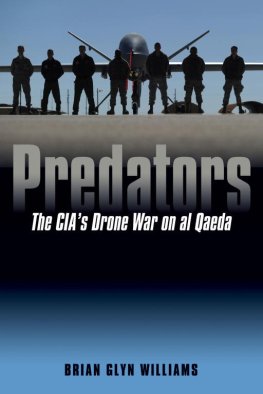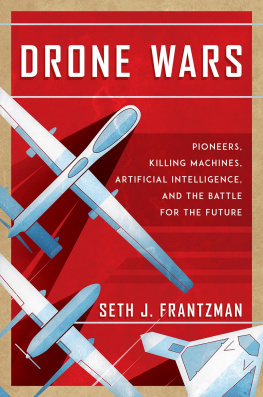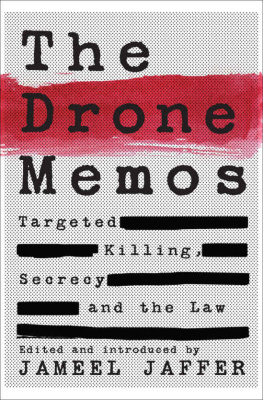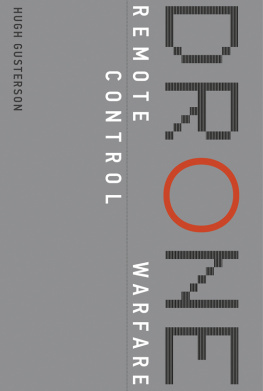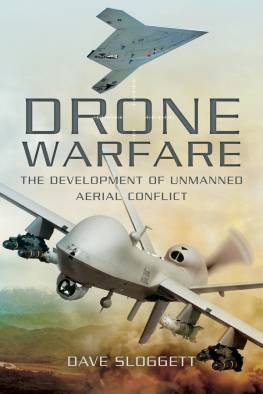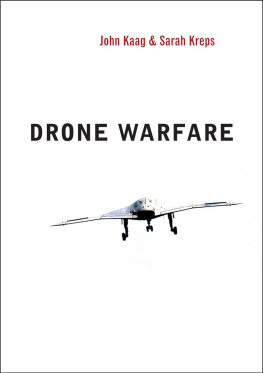
Thank you for buying this
Henry Holt ebook.
To receive special offers, bonus content,
and info on new releases and other great reads,
sign up for our newsletters.

Or visit us online at
us.macmillan.com/newslettersignup
For email updates on the author, click here.
The author and publisher have provided this e-book to you for your personal use only. You may not make this e-book publicly available in any way. Copyright infringement is against the law. If you believe the copy of this e-book you are reading infringes on the authors copyright, please notify the publisher at: us.macmillanusa.com/piracy.
For Declan and Otis
This book has been made possible by the insights and advice of many people. To name them all would be impossible, and, in the case of some, unwise. However, I must express heartfelt thanks to my agent, Anna Stein, for her unfailing encouragement and support, and to my editor, Serena Jones, who grasped the idea of this book immediately and thereafter provided a deft editorial touch and sound advice. Ellen Rosenbush and James Marcus at Harpers magazine kindly allowed their Washington editor to disappear for several months. Noga Malkin and Michael Smallberg provided invaluable research at the shortest notice. Danijel Zezelj has my gratitude and admiration not only for the brilliance of his illustrations but the speed with which they were produced. Most of all, I thank Leslie Cockburn, once again my surest guide, supporter, and friend.

In a cold February dawn in 2010, two small SUVs and a four-door pickup truck headed down a dirt road in the mountains of southern Afghanistan. They had set out soon after midnight, traveling cross-country to reach Highway 1, the countrys principal paved road, which would lead them to Kandahar and north to Kabul. Crammed inside were more than thirty men, women, and children, four of them younger than six. Everyone knew one another, for they all came from the same cluster of mountain villages roughly two hundred miles southwest of Kabul. Many of the men, unemployed and destitute, were on their way to Iran in hopes of work. Others were shopkeepers heading to the capital to buy supplies, or students returning to school. The women carried turkeys, gifts for the relatives they would stay with in Kabul. A number were Hazaras, an ethnic minority of Shia Muslims whom the Taliban treated with unremitting cruelty whenever they had the opportunity. Now they were in western Uruzgan Province, Taliban country and therefore very dangerous for them, but they risked the shortcut because they were short on gas.
They met no other cars and little foot traffic; the world around them must have seemed empty. But it was not. Unbeknownst to them, they were being watched and their every movementeven the warmth from their bodiestransmitted across the globe. As the ramshackle vehiclesone of them kept breaking down and another blew a tireclattered along, people they would never meet conferred across oceans and continents as to who they were, where they were going, what they were carrying, and whether they should live or die.
Unwittingly, the little group was driving toward an Operational Detachment Alpha, a U.S. Special Forces patrol dropped in with a supporting force of Afghan soldiers soon after midnight to attack the nearby village of Khod. Such raids were routine in Afghanistan, planned and executed by the semimythic Special Operations Command that specializes in the pursuit and elimination of high-value targets. Someone thought this operation important enough to give it the code name Operation Noble Justice.
Sunday, February 21, 4:12 a.m.
Pilot of MQ-1 Predator, call sign Kirk 97: We are eyes on the first vehicle; observing to try and PID on the pax in the open; stand by for movement on the second.
The 27-foot-long Predator drone was circling at 14,000 feet. Below its belly protruded a sensor ball carrying a variety of cameras, including an infrared video that picked up the warmth thrown off by the vehicles and passengers 2.5 miles below. Almost in an instantbut not quitethe images flashed across the world to twin screens inside a metal box roughly the size of a shipping container at Creech Air Force Base in the Nevada desert. Facing the screens sat Kirk 97, a pilot guiding the drone by remote control. Beside him sat a sensor operator who guided the cameras and weapons-targeting laser. In another room nearby a third member of the crew, the mission intelligence coordinator, was watching the same video images.
The pictures had audiences elsewhere. Hurlburt Air Force Base in the Florida Panhandle is headquarters of Air Force Special Operations Command and home to one station of the vast but little-known global network referred to as the Distributed Common Ground System (DCGS). This is the central nervous system funneling, collating, and sharing the unimaginable quantities of imagery and electronic information collected by air force drones and reconnaissance planes (ISR for Intelligence, Surveillance, and Reconnaissance) around the globe. In theory, anyone in any part of DCGS has access to any information that has been fed into the system, wherever they are.
Thus it was that the images captured by the Predator were being watched at Hurlburt by a dedicated team, a minibureaucracy of young men and women, each with specialized tasks. In overall charge was an intelligence tactical coordinator (ITC) supervising two screeners. The chief screener, a civilian on contract from SAIC, a major defense corporation heavily involved in drone operations, outranked the second screener, a junior air force officer who happened to be her husband. Also present were two full-motion video analysts (FMVs). While one FMV watched the screen, the other typed products, conclusions drawn from the imagery, which were then passed to the screeners for onward transmission via a system known as Internet Relay Chat to the mission intelligence coordinator sitting in his trailer in Nevada. A geospatial analyst tasked with generating relevant geographical information for the other analysts made up the complement.
The video had still more destinations. Special Operations, born in World War II as a term for agents sent behind enemy lines to train and lead friendly guerrillas, had by the twenty-first century ballooned into a 66,000-strong branch of the U.S. military, with an inevitably complex command arrangement. The little raiding party in Uruzgan that night was under the supervision of a Special Operations Task Force headquartered in Kandahar, which was naturally in receipt of the ubiquitous video, along with the written messages streaming back and forth between Nevada and Florida. Kandahar in turn answered to Combined Special Operations Task Force headquarters at Bagram, outside Kabul, where the video was also screening.
The ultimate beneficiary of all these complex arrangements was a sergeant attached to the raiding party. Known as a joint terminal attack controller, he was responsible for communicating via radio with any and all air support, including the Predator, and relaying orders and intelligence to and from the young captain commanding the party. Calling himself Jaguar 25, the sergeant was the forces only link with the team in Nevada, which in turn was the sole link with the screeners in Florida.
Almost as soon as the raiding party disembarked from their helicopters shortly after midnight, someone out in the darkness had switched on a handheld radio and broadcast a general call to arms. They are here, he said, let us get all the Mujaheddin together and defend this place. It was a simple, uncomplicated exhortation addressed to no one in particular and audible to anyone with a radio, utterly unlike the assorted esoteric systems employed by the U.S. forces. Americans listening in were bemused by their enemys unconcern for eavesdropping, and indeed the Taliban summonsif that was what it waswas overheard by a host of U.S. military intelligence posts on the ground and in the air. Accordingly the word was passed to look out for enemy reinforcements. Two vehicles in tandem, the pickup and one SUV, lumbering into the area easily fit that picture, and suspicions hardened when they and another SUV flashed lights at each other before continuing on together in the direction of the patrol as it waited for daylight.
Next page


